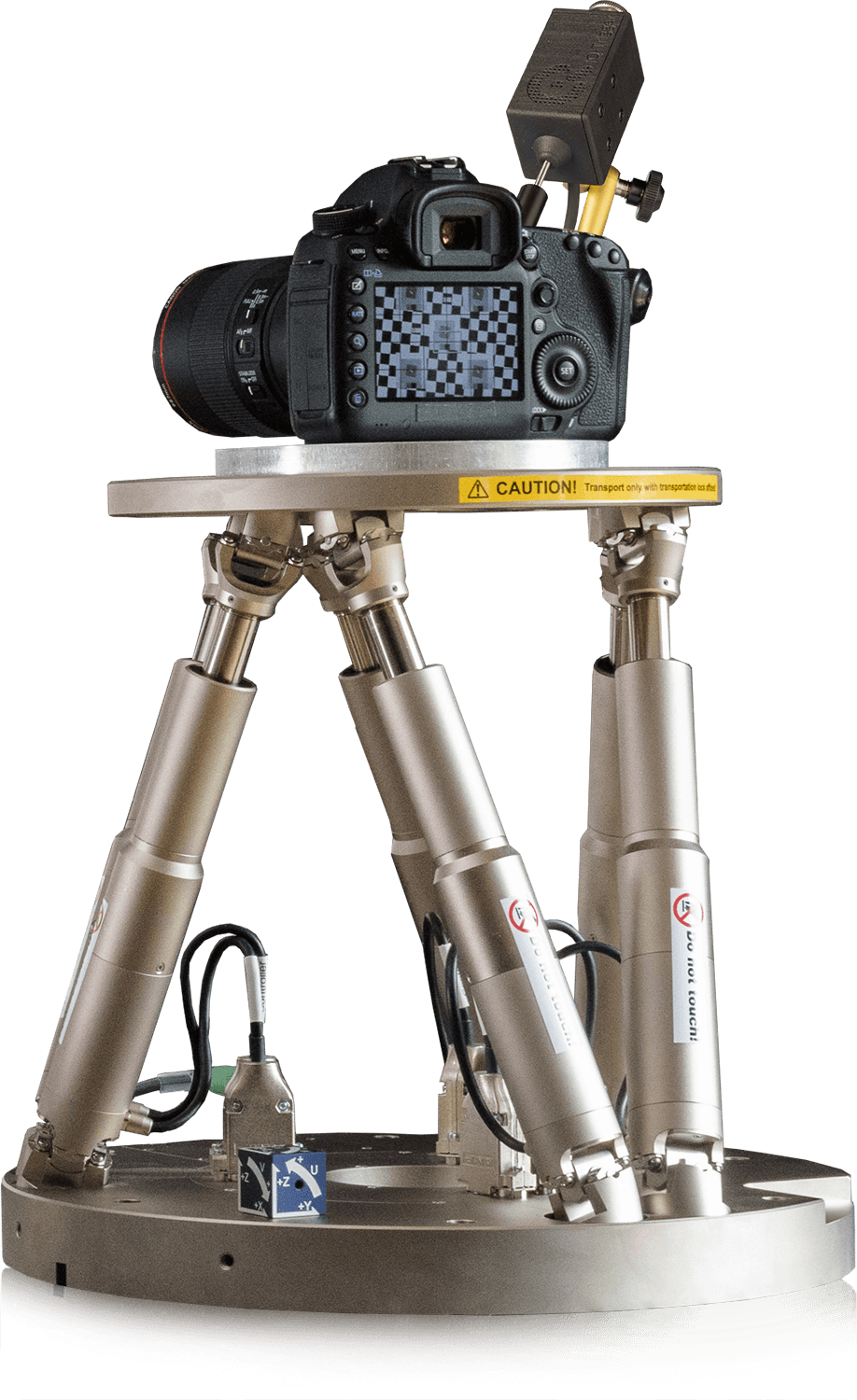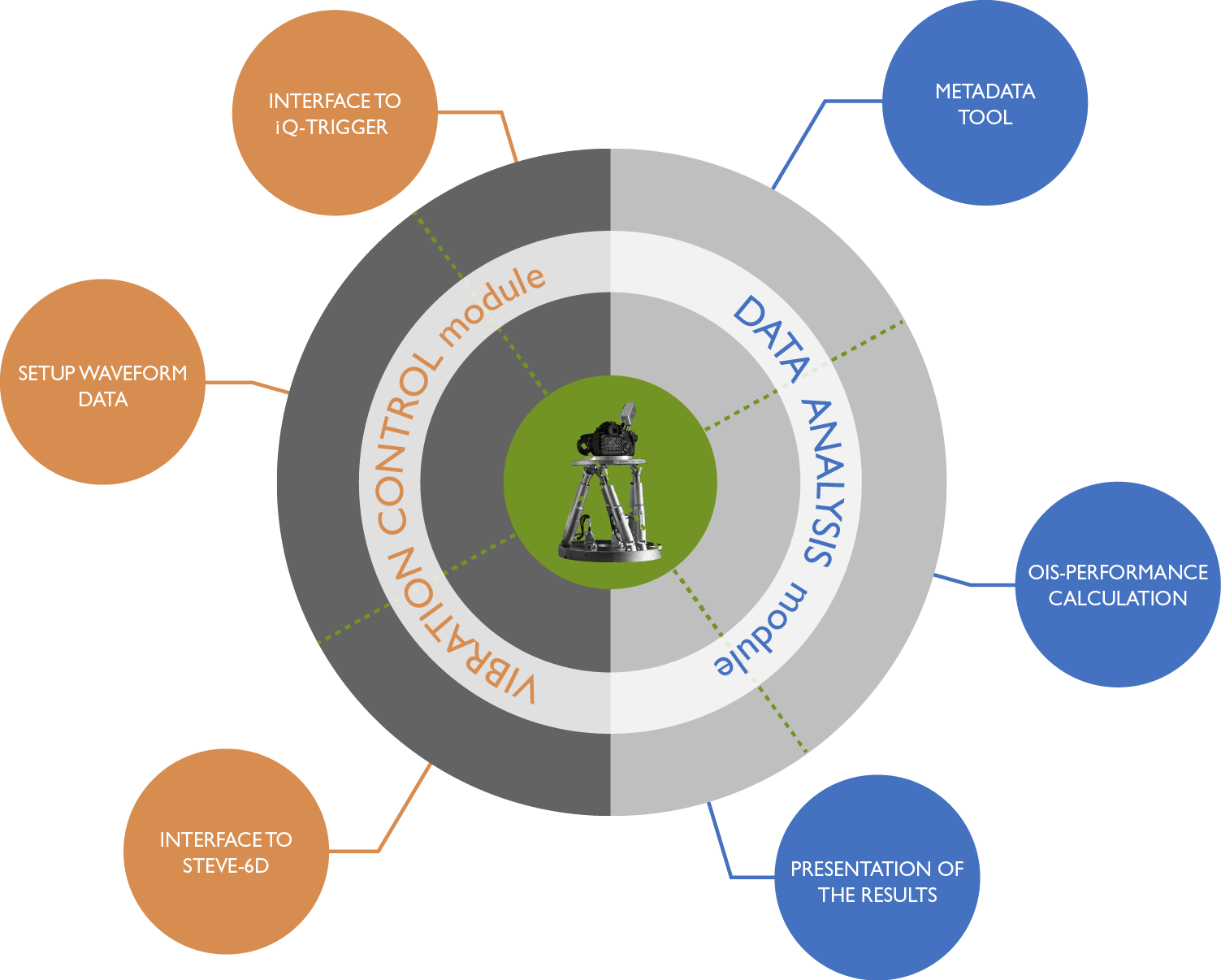The Stabilization Evaluation Equipment (STEVE) has been developed to analyze the optical image stabilizers (OIS) of a camera system. These stabilizers provide better image quality by compensating for the human hand’s natural tremor. If the stabilization is working well, it can prevent blurring in the image.
To begin a measurement with STEVE, a digital camera or mobile phone must first be mounted securely on the hardware. The software solution allows the user to define any arbitrary motion with six degrees of freedom, thus controlling STEVE-6D's vibration. The software also controls iQ-Trigger, a remote-controlled, mechanical “finger " that presses the camera’s shutter button. The software’s analysis module evaluates the resulting images. The results provide insight into the image stabilizer’s performance.
Technical information
The previous model, STEVE-2D, performed actions with two degrees of freedom; STEVE-6D provides six degrees of freedom. The intricate movements are carried out using a hexapod. An efficient control software individually controls the frequency and amplitude of each movement direction. The software’s analysis function automatically evaluates the recordings from the test chart TE261 and presents the results of the image stabilizer’s performance numerically and graphically.
STEVE can generate different vibrations: a CIPA-compliant vibration, sine waves, or individual waveforms. When using STEVE, all movements can be reproduced and repeated accurately and in the same way.
The delivery for STEVE-6D includes the hardware (hexapod), the control and analysis software, the automated shutter-triggering device iQ-Trigger, and the iQ-Mobilemount. Ideally, STEVE-6D should be combined with the test chart TE261 and the iQ-AF Box. The iQ-Anchor is an accessory that can attach STEVE securely. Another option is to mount STEVE on the Honeycomb Breadboard, a stable board for use with an already available table.

Software STEVE-6D
The software consists of two modules:

1. Vibration control module
to control movement
Interface to STEVE-6D
Choose Pivot-point as required
Interface to iQ-Trigger
triggering of the camera
Set up waveform data
- with the sine wave generator for every axis
- chose one of the three CIPA handshakes
- or upload a custom waveform with Cartesian coordinates
2. Analyze data module
calculation of the image stabilization performance
Metadata tool
Set Camera Metadata if not available
pixel pitch and shutter time are necessary for calculation
image batch processing for IS performance calculation
comparison IS ON and IS OFF
Displays the results
- stabilization performance in f-stops
- the edge spread function "ESF"
- spatial frequency response "SFR"
Mobile phone challenges
Please see this paper, published at the Electronic Imaging Conference, for details about the limitations of measuring the OIS performance with mobile phones.
| STEVE-6D | |
|---|---|
| Intended use | Cameras |
| Motion types | 6-axis sine generator, custom waveforms |
| Features | A hexapod according to CIPA standard, control and analysis software included, iQ-Trigger and iQ-Mobilemount included |
| Maximum load | 10 kg |
| Maximum load (CIPA certified) |
6 kg |
| Single-actuator resolution | 500µm |
| Max. velocity X, Y, Z | 50mm/s |
| Max. velocity θX, θY, θZ | 600 mrad/s |
| Weight | 12 kg |
| Dimensions (w x h xd) | 348 x 328 x 348 mm |
| API C++ | Available as a separate option (iQ-Drive API since version 2.0.0) |
| 3rd party product information | The hexapod is a 3rd party product that IE uses in this context. Image Engineering is not the manufacturer of the hexapod unit. |